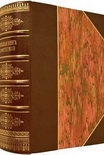The Triumph of Nancy Reagan Karen Tumulty (motivational novels .TXT) 📖

- Author: Karen Tumulty
Book online «The Triumph of Nancy Reagan Karen Tumulty (motivational novels .TXT) 📖». Author Karen Tumulty
After the inauguration of the forty-first president, the Bushes and the Quayles accompanied the Reagans to the helicopter that would carry them to a waiting government Boeing 707 at Andrews AFB. It was set to take off not as Air Force One—that name was used only if a sitting president was aboard—but as Special Air Mission 27000. The chopper was designated Nighthawk One, not Marine One. As Nancy got ready to climb in, the now-former first lady spotted a figure standing by himself to one side. It was George Opfer. Nancy broke away and ran over to embrace the Secret Service agent who had shared the darkest day of her life with her back in March 1981.
Then they lifted off. The helicopter pilot made an extra circle over the White House, so the Reagans could see it one more time. Tears covered Nancy’s cheeks as the couple gazed out the window. “Look, dear,” Ronnie said tenderly, “there’s our little bungalow.”
CHAPTER TWENTY-THREE
On the first working day after his return to California, Ronald Reagan surprised his staff by showing up at his new suite of offices in Century City. The place wasn’t even ready yet. When they got word that the former president was on his way, his chief of staff, Fred Ryan, and the others scrambled to throw some pictures on the wall and hide the boxes they had been unpacking. “Well, I’m going to work on some things,” Ronnie said cheerily when he arrived, and then he disappeared into his private office. A few hours later, he emerged and handed Ryan a list of nearly a dozen names. “I’ve agreed to see these people,” Ronnie said. Ryan was perplexed. He didn’t recognize any of them.
“They’re people who’ve been calling,” Ronnie explained. The phone system had not been properly connected and calls into the office were going straight through to the ex-president himself. Most were inquiries from members of the public, who were surprised to hear Ronnie’s familiar voice on the other end of the line, and even more startled to get an invitation to come over and meet him. The harried scheduling team honored the commitments that Ronnie had made to these strangers. “They came in. They got their picture taken. They brought their kids in,” Ryan recalled. “One guy turned to me and said, ‘This is pretty cool.’ He said, ‘My neighbor likes Ronald Reagan. I think I’m going to bring him in.’ I said, ‘No, you got lucky once. Not twice.’ ” Ryan also made sure the phones got fixed and that future calls to the main number would be routed to a receptionist.
Ronnie and Nancy had looked forward to this phase of their life. The end of his presidency was “a bittersweet experience,” he said. Returning to California was “the sweet part of it.” He pronounced their new Bel Air home, one of the smaller and plainer ones in the ultrarich neighborhood, his favorite of all the houses in which they had lived. He would have more time to spend at his beloved ranch. Nancy would be back among her closest friends. There was even speculation that they might go back into the movies, though Nancy put that to rest when she told celebrity interviewer Joan Rivers, “I don’t think I’m right for today’s films.”
Their future could hardly have looked more secure. Ronnie, by all appearances hale and healthy as he approached his eightieth birthday, enjoyed the distinction of being the only living president to have been elected twice and exited the office in good standing. His final job approval rating in the Gallup poll was a robust 63 percent. On the last day of his presidency, Ronnie received a letter from Richard Nixon congratulating him: “Politics is a roller coaster, and you ended right at the top!” Less than forty-eight hours later, Ronnie signed a deal with Simon & Schuster to write two books, reportedly for around $5 million.
The Reagans soon were traveling the world in the near-royal style that ex-presidents are afforded. In June 1989 he was knighted by Queen Elizabeth and feted by Margaret Thatcher at a dinner at 10 Downing Street. On that same weeklong trip, he was inducted into France’s prestigious Academy of Moral and Political Sciences. The following month, he stepped in as a guest announcer for the first inning of baseball’s annual All-Star Game in Anaheim—a return to his earliest professional roots—and a month after that was named to the Cowboy Hall of Fame in Oklahoma.
Meanwhile, Ronnie got the satisfaction of seeing a new world begin to take shape as the result of things that he had helped to make happen. In 1990, three years after he had demanded that Gorbachev “tear down this wall,” he went to Berlin and took a hammer and chisel to its remnants. Crowds chanted, “We love you, Ronnie!” A nine-foot-tall segment of the wall would later stand on the terrace of his presidential library. He was also welcomed at the Gdansk shipyards in Poland, where the anti-Communist Solidarity movement had been formed. Sanctions imposed by the Reagan administration were widely credited with forcing the government to make democratic concessions. Solidarity’s founder, Lech Walesa, told Ronnie: “Your position, firmness, and consistency meant hope and help for us in the most difficult moments.”
In May 1992 Gorbachev, who was overthrown in a coup by Communist hard-liners after the fall of the Soviet Union, spoke at the newly opened Reagan Library and received the first Ronald Reagan Freedom Award. He also paid a nostalgic visit to the Reagans at their ranch. Ronnie gave Gorbachev a Stetson, which he





Comments (0)